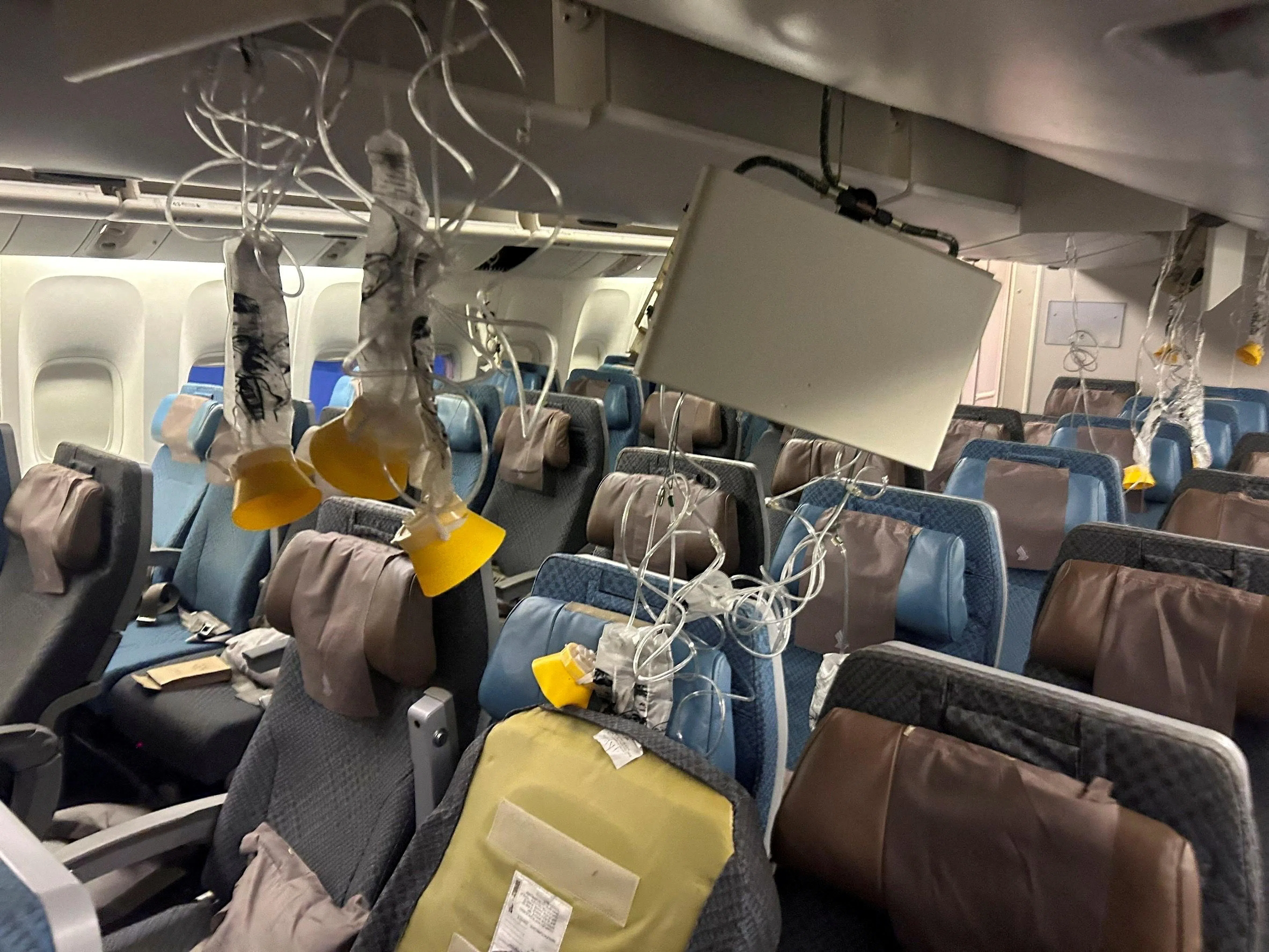PASSENGERS on board the Singapore Airlines flight that encountered severe turbulence in the skies over Asia suffered traumatic harm ranging from the spinal cord to skull and brain injuries, a Thai hospital has revealed.
Medics are still treating a wide-range of injuries, including some severe ones, but none are life threatening, Samitivej Srinakarin Hospital director Adinun Kittiratanapaibool said during a media briefing in Bangkok on Thursday (May 23).
One British man was killed and dozens of others were seriously hurt after Flight SQ321 from London to Singapore suddenly lost altitude on Tuesday as it entered neighbouring airspace. The latest update from hospital authorities in Thailand revealed the injuries inflicted as bodies catapulted into the cabin roof and personal belongings were hurled around the aircraft.
“Some patients suffered from paralysis but the weakness of the muscles is changing all the time,” Adinun said. “We have to observe them every day. It’s too soon to determine if it will be permanent.”
“Most of the injuries the patients are suffering from are related to the spine, the brain,” he added. The patients under the hospital’s care range from two to 83 years old.
Currently, 40 Singapore Air passengers remain in hospitals across the Thai capital, with one patient discharged, Adinun said at the press conference. Some 22 patients have received treatment for spinal and spinal cord injuries and six have suffered skull and brain injuries.
GET BT IN YOUR INBOX DAILY
Start and end each day with the latest news stories and analyses delivered straight to your inbox.
Samitivej Srinakarin Hospital said 20 people from the flight remain in intensive care while 17 have undergone surgery. More than 100 people required medical care immediately after the flight landed safely in Bangkok.
First-hand accounts of the drama are still emerging.
With almost no warning, the aircraft struck severe turbulence and people standing in the cabin or sitting down without lap belts ricocheted off the ceiling and back to the floor, one passenger told The Straits Times. Luggage and the remnants of breakfast were strewn over the floor, while oxygen masks dangled from the roof. Bleeding crew members attempted to treat some of the injured passengers.
According to The Straits Times, passengers who returned to Singapore from Bangkok the next day on a replacement flight were given S$1,000 cash inside a white Singapore Air envelope. The airline declined to comment to the newspaper on any compensation payments.
Turbulence can occur when a plane hits a strong air current that pushes or pulls the airframe. The phenomenon can be caused by pockets of hot air or powerful weather systems. At higher altitudes, aircraft might encounter hard-to-identify clear air turbulence caused by air masses with differing velocities.
Medical experts have outlined the unappreciated risks posed by turbulence in the wake of the fatal flight. Such incidents are so rare that airlines typically do not mandate passengers to wear seatbelts unless bad weather is expected.
The forces can fling passengers around so hard that it’s as dangerous as falling headfirst off a ladder or diving into a shallow concrete swimming pool, according to Rohan Laging, deputy director of emergency services at Melbourne hospital group Alfred Health.
Passengers who are not secured when an aircraft suddenly loses altitude are exposed to huge vertical loads. If they are rammed into the roof of the cabin, they run the risk of serious spinal injury, head trauma or internal organ damage as their bodies abruptly decelerate.
Blunt trauma incidents, when bodies collide with each other or hard surfaces, are more dangerous for elderly passengers, those on blood-thinning medication, or people with existing health complaints, Laging said. Fortunately, there’s a lower risk of penetrative injuries because many surfaces inside aircraft cabins are intentionally rounded, he said. BLOOMBERG



